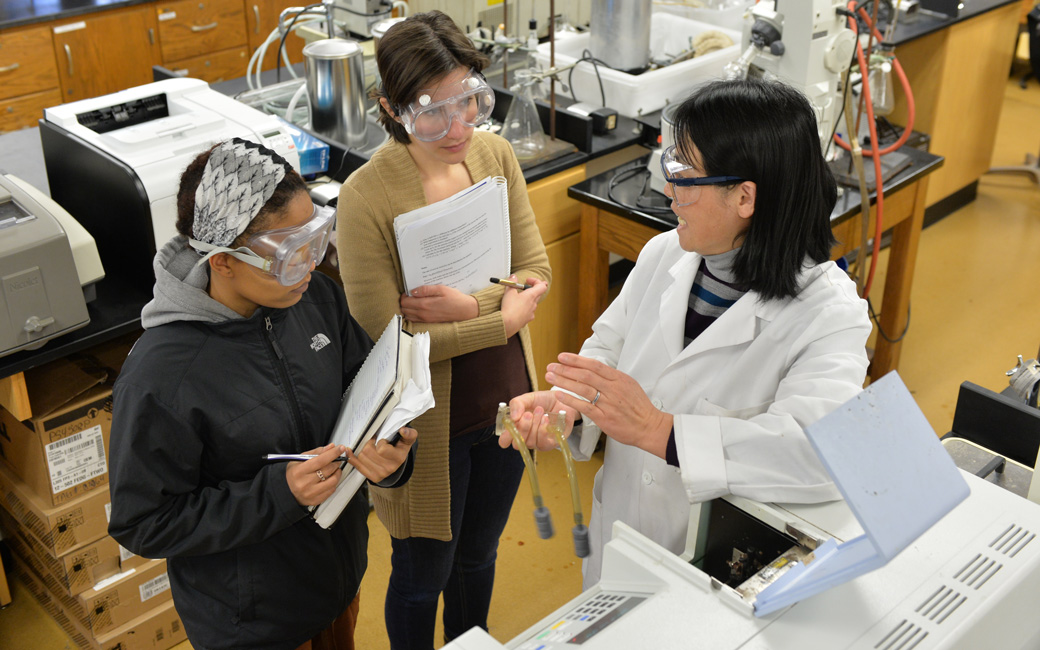Research Opportunities
Students in the MB3 program are expected to complete a research experience as part of their undergraduate education.

All of the faculty are very interested in helping undergraduates to do research. Having said that, most faculty have 2-3 students asking to join their research programs for every student they accept. You need to set yourself apart by demonstrating that you really know what the faculty member you select is studying and that you are genuinely interested in their work.
Get Involved
We will be updating this site regularly to describe specific research projects for which faculty in the program are seeking undergraduate student involvement. If you are interested in getting involved in research, we suggest you visit the list of MB3 program faculty. Read about the research interests of the MB3 faculty mentors, and if anything sounds interesting to you, contact the particular faculty and inquire about the possibility of doing research.
Alternatively, students may elect to participate in an approved internship experience at one of the many academic, clinical or commercial research laboratories in the Baltimore area.
1. Do Your Homework
Familiarize yourself with the type of research in which the various faculty members are engaged by talking to your advisor, other faculty, and by looking at faculty webpages on the Biology and Chemistry Departments’ website. Make a prioritized list of those faculty you are most interested in working with. Obtain one or two papers that your top choice for mentor has recently published. Read those papers (you may need some help). The idea is that you want to be familiar enough with the recent research in the lab that you can speak intelligently about it and that you can make an informed decision.
2. Contact Potential Mentors
Contact faculty members whose research is of interest to you and arrange to meet them in person. Send an email with the following components:
- A statement that indicates that you are “interested in their research”. When you do so, be specific enough that the faculty member knows that you have gone beyond just the web page and have actually read some of their work. For example, you might say that you are interested in his/her work on the evolution of behavior in great apes, especially the work on the evolution of social mimicry. The point here is that while the general area (behavior in great apes) is material that you can derive from the web page, the more specific work (evolution of social mimicry) was only available by reading papers. Please note that you are not trying to deceive your potential mentor. You do not want to give the impression that you have been following their work since high school and that you came to Towson just so you could work with them. What you are trying to demonstrate is that you are 1) really interested in their work and 2) you are a student who does their homework, so to speak.
- A description of yourself, including what year you are, what science courses you have had and what you plan to do after graduation.
- A request to meet with them to talk about their research. Here is also where students usually indicate that they are interested in discussing the possibility of doing research with them” and give them a complete list of days and times that you are free to come to their office to learn more.
Whatever you do, DO NOT simply send an email asking to join their research team without any of the supporting statements described above. Faculty members are rightfully proud of their research. They receive many requests for research opportunities and cannot take on every student who approaches them. Most faculty members will give a preference to students who express a well-informed and strong interest in their research.
If you do not hear back from the potential mentor within a week, feel free to email them again. If you do not hear back within a week after that, you should call them or visit their office hours. Remember, if a faculty member does not respond immediately it is likely because they are very busy. Never complain about a slow response, Stay positive and concentrate on your interest in their research.
3. Meet Your Potential Mentor
In your face-to-face meeting with each faculty member, find out what types of projects they are currently pursuing and whether or not they are accepting new undergraduate students for those projects. Be prepared to describe again what courses you have had, what your career goals are, and how much time per week you can commit to the effort (and when you are available each week). You may also ask to talk to the faculty member’s current research students to see what “life” is like in that faculty member’s laboratory.
4. Choose a Mentor
Based on your “interviews” with various faculty, you should be able to decide in whose lab you would most like to work. Contact your top choice and ask if you can join their research team. Do not be discouraged if your first choice ultimately decides not to take you on as a research student. Faculty have to make a very large commitment of time and resources when they accept a new student, and they can only handle so many students at one time. Thus, rejection is likely not a reflection on your qualifications or abilities. Move on to your second choice.